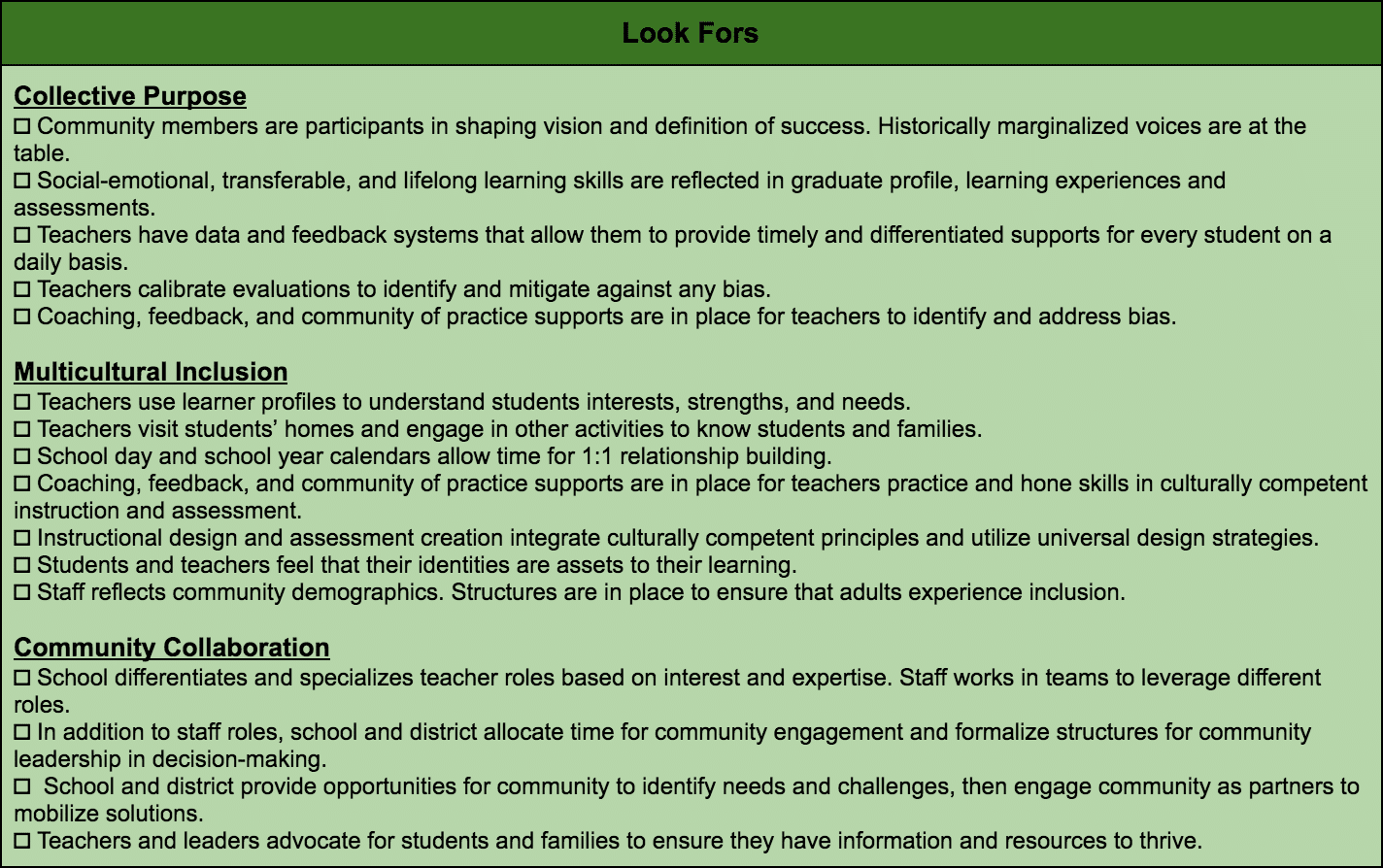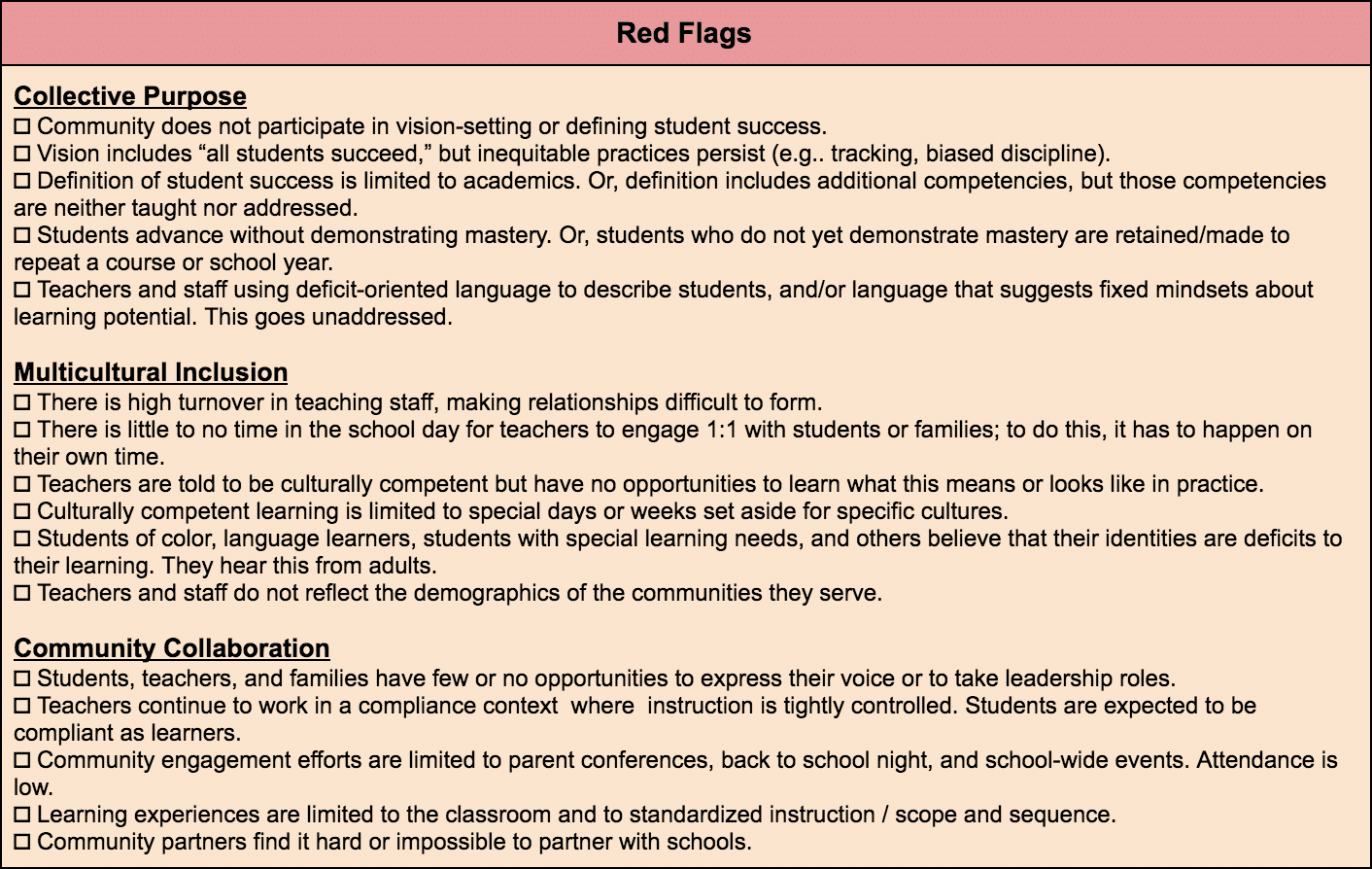Entry Points: Moving Toward Equity-Oriented Practice
CompetencyWorks Blog
 This is the second post in a ten-part series that aims to make concepts, themes and strategies described in the Moving Toward Mastery report accessible and transferable. The introduction to the series is here.
This is the second post in a ten-part series that aims to make concepts, themes and strategies described in the Moving Toward Mastery report accessible and transferable. The introduction to the series is here.
“In an equity-focused profession, all aspects of practice are designed to ensure success for all learners. Teachers create multicultural and inclusive learning environments and are members of multicultural and inclusive professional communities. They investigate and address their biases and work in partnership with the community to disrupt systemic inequity.” – Moving Toward Mastery, page 21
Almost all competency-based schools and districts would tell you that they are working to close opportunity and achievement gaps to help every child thrive. And yet, while there are examples of progress, equity is far from a reality. Why? That’s a complicated question, but part of the answer has to be about teachers. We can’t get to equity without helping teachers develop the competencies to promote equity every day, with every child.
You might read this and think, “Ok, sure, but how? And, is equity really something that can be taught?” I believe that it is possible for adults to “learn” the mindsets and skill sets needed for equity if they are committed to doing so and if they are supported along the way. What does it look like to be committed? For teachers, it means doing deep personal work that will sometimes be difficult, though ultimately rewarding. For leaders, it means creating the conditions in which teachers can engage in this reflection, addressing systemic inequities and integrating equity into teacher training, hiring, professional learning, evaluation and advancement.
So, what might equity-oriented teaching look like, and how can you cultivate equity-oriented teaching in your school or district? The next three paragraphs paint a vision of what equity-oriented practice would look like. After that, I offer tools to help leaders and teachers assess equity practices in their school or district and identify entry points for action.
A Vision of Equity-Oriented Practice
Equity starts with a collective purpose. Teachers believe that all students can learn at high levels and are committed to ensuring that all students thrive. Student success is broader than academics: it includes agency, social-emotional competencies and knowledge and skills that can be applied in the real world. Teachers do more than pay lip service to these ideas. They adjust, learn and challenge themselves in their classrooms to be sure each student is getting what they need. They advocate for their students and their families. They own their role in creating equity by reflecting on their own biases and biases in the systems around them. Because after all, eliminating bias starts with knowing what they are.
Equity fosters multicultural inclusion. Teachers form authentic relationships with students and families, and these relationships help them to create culturally-relevant, inclusive learning environments and learning experiences. Teachers also form authentic relationships with their colleagues: they can foster multicultural and inclusive learning because they experience it themselves. Teachers have opportunities to develop their skills as multicultural practitioners from the start, beginning in preparation programs and continuing as they advance in their careers. Teachers continually do “self work.” They know who they are and they understand how their identity informs their teaching. Schools and districts are proactive about ensuring that teachers reflect the diversity of the students they serve. Because of this, students have the opportunity to see themselves reflected in the adults around them, and to see adults modeling cross-cultural curiosity, compassion and competency.
Equity shares power with communities. Power is not hierarchical, it is shared. This means that teachers enable their students to have voice, choice and ownership in their learning. It means that teachers and leaders share power with families and communities, partnering with them to support students’ learning. Partnership is more than engagement – it means giving families and community leaders real roles and a meaningful stake in the educational experience. And it means that learning is connected to community. Teachers know how to design learning experiences that connect students to their culture and communities, and students are able to see themselves in their learning.
Tools to Assess Equity Practices
Key Characteristics, Look Fors and Red Flags



Reflection Questions
- Where are we in our practice today?
- Where do we want to be? What can equity-oriented practice look like in our system?
- What are we doing well that we can build on? What strengths can we leverage?
- What are we doing that will get in our way? What barriers will we need to address?
- Where can we begin?
- Who do we need to include in this work?